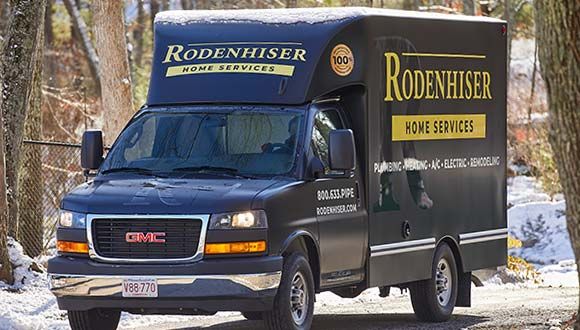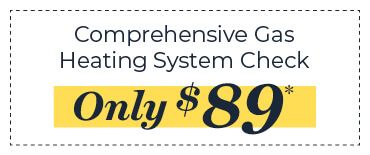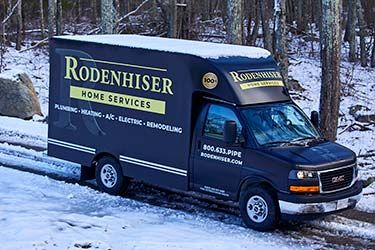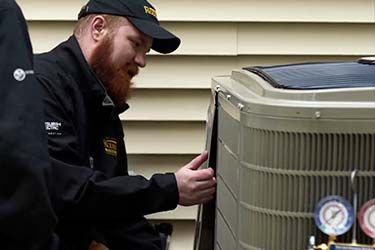



Figuring The Cost Of A Geothermal Heat Pump
Are you considering an investment in a geothermal heating system? The deciding factor for installing a geothermal heat pump may depend largely on its initial cost.

While geothermal systems are generally considered to be the most efficient type of heating and cooling equipment available, their up-front cost is sizable when compared to standard heating systems.
It's important to weigh the initial costs and long-term savings when choosing a geothermal heat pump. There are two parts of the installation process to consider when calculating estimated costs.
The indoor portion
In order to determine the type and size of geothermal heat pump needed for your home, your HVAC contractor will consider:
- The heating and cooling load of the home, which determines the size of the heat pump required.
- The efficiency of the structure, including insulation levels and airtightness. Making improvements in the home's overall efficiency may lower the heating and cooling load, which allows for a smaller-sized system.
- Modifications to the existing ductwork may be required, although this is generally of minimal concern. Your professional HVAC contractor will be able to assist in determining any added installation costs.
The outdoor portion
This portion of the geothermal heat pump is comprised of the looping field, a series of pipes buried underground that transfers heat energy. Installation requires drilling, sometimes excavation, and the laying of piping material. The size and cost of the loop field depends on soil conditions and its thermal capabilities. Moving landscape or outbuildings increases costs, too. It's important to work with a seasoned, qualified geothermal expert to achieve an accurately sized looping field and indoor system, and expert installation.
Contact Rodenhiser Plumbing, Heating & Air Conditioning for more information about a geothermal heat pump, or to work up an estimate. We serve the Route 495/128 area of Massachusetts.
Our goal is to help educate our customers about energy and home comfort issues (specific to HVAC systems). For more information about heat pumps and other HVAC topics, download our free Home Comfort Solutions Guide.
Image via Shutterstock.com
Nice people.
Great service.
Since 1928Terms & Conditions | Privacy Policy





Read From Over 14,000 Happy Customers
-
Both Alex and Patrick were knowledgeable, courteous, and professional. They made a change that might have solved the recent problem and have structured a more complete solution. We agreed to this...

-
Mike was thorough, thoughtful and considerate. Covered their shoes before entering, surveyed my issue and provided an explanation of the services and costs. Great Job!

-
Alex did a great job providing an explanation of the services provided and went out of his way to offer assistance/advice on other issues outside of our scheduled maintenance visit.

-
Brian did an excellent job inspecting our 18-year old boiler and replacing some of the accessory hardware that needed it, he also adjusted the outgoing hot water settings for our radiators and...

-
Rodenhiser is my one stop shop!!! They take care of my HVAC, electrical, and plumbing issues & are always helpful addressing any questions I may have about the systems in my house! Everyone...

-
Chris G. and Nick V. showed up bright and early at 8am to fix my water heater issue. They were on time, polite and were able to fix an issue that has been plaguing my house for a good year. They...

Call Rodenhiser at
1-800-462-9710
Call Rodenhiser at 1-800-462-9710
When you are looking for plumbing, electrical, heating or air conditioning in the Route 495 / 128 area, you will be delighted that you called Massachusetts' trusted choice since 1928.
With a total dedication to professional workmanship and excellent service, discover why families and businesses continue to trust Rodenhiser after generations of service

Trusted Plumbers
Fast, On Time
HVAC Experts
Satisfaction Guaranteed
Expert Electricians
Maintenance Plans
CONTACT RODENHISER TODAY
325 Hopping Brook Rd Holliston MA 01746.
-
Master Plumber: #10961
-
Corporate Plumbing: #2288
-
Master Electrician: #23917A
-
Electrical Business: #4804
-
Master Sheet Metal (Unrestricted): #5867
-
Corporate Sheet Metal: #641
-
Home Improvement Contractor: #188806
*Heating system check terms and conditions: Residential Only. Must reside within our service area. Offer only available to 1 unit per household additional units are at full price. Can not be combined with other offers
*Late Season Special Extra Conditions: Gas Systems only. No Discounts on oil systems. Promotional price limited to one system per home, additional systems will be charged at full price. Residential Systems only. Must reside within our service area. *For EV Charger Offer also: valid only when the system is purchased through Rodenhiser.
















